Owners of guesthouse Teratak Damai Langkawi drew inspiration from local culture and practices to give travellers a taste of the intrinsically sustainable village life.
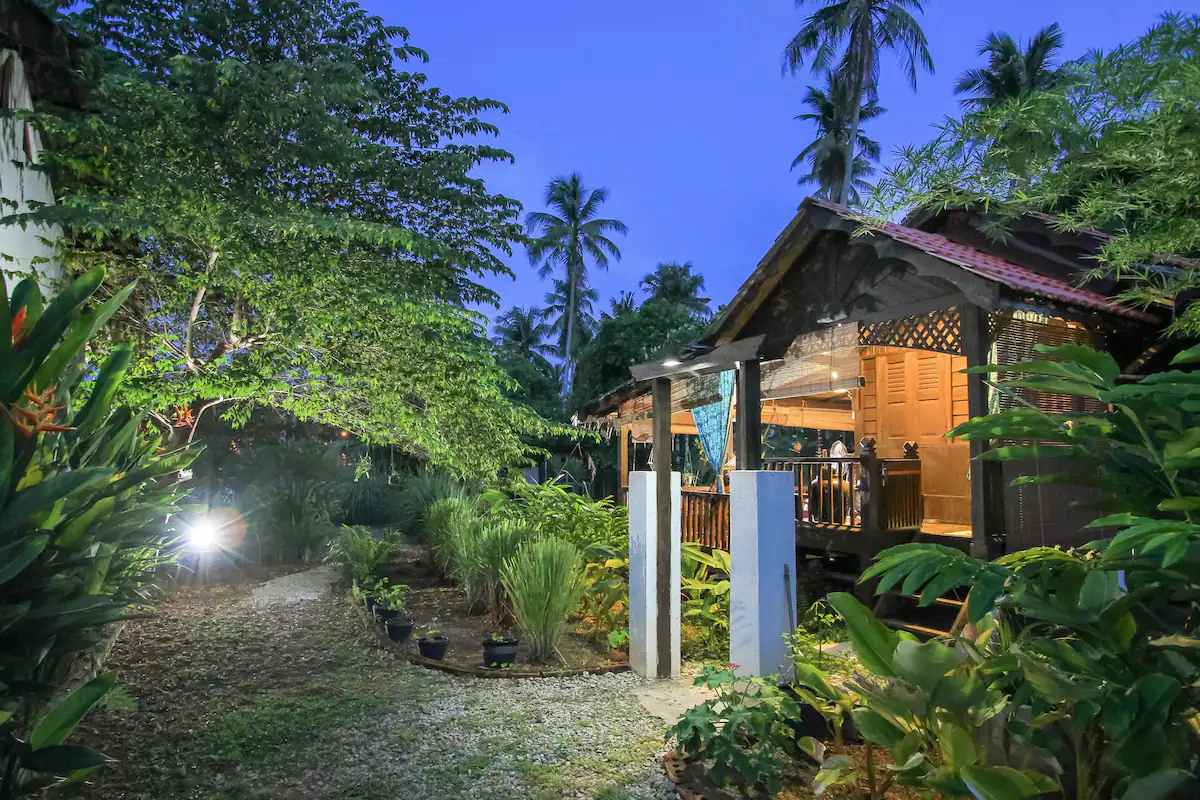 Photo by Teratak Damai Langkawi
Photo by Teratak Damai Langkawi
“If you’re looking for excitement, it’s not here,” Marina Mazlan tells me with a smile.
In the sleepy village of Kampung Gelam in Langkawi, the slow life unfurls along with the seasons. Villagers are mostly farmers and fisherfolk, bound by the rising and setting of the sun, the shifting seasons throughout the year.
She and her husband Rubendra Gnaneswaran Abdullah fully indulge in this quieter take on life.
Owners of a tranquil 1.25 acre compound consisting of four refurbished traditional Malay houses and two new brick houses, they have played host to many travellers for over a decade now.
The start of a love affair
 Marina and Ruben at home. Photo by Teratak Damai Langkawi.
Marina and Ruben at home. Photo by Teratak Damai Langkawi.
Acting on their love for vernacular architecture, Marina and Ruben decided to take a leap and made their first purchase of an existing traditional Malay house and a teratak (hut) in 2010.
Unlike modern houses, traditional Malay houses are modular and mobile. Built without nails, the house’s dovetail joinery allows for the entire building to be taken apart and reassembled in a completely different location. It was in this fashion that Marina and Ruben started to collect traditional Malay houses from all over the island, relocating them to their compound, curating a set of lovingly refurbished pieces of Malay heritage.
Wanting to keep the family close but not too close, their idea was to have a rumah ibu (main house) that would be connected by selang (pathways) to other houses within a short walking distance, all in the same gated compound.
Alas, when the empty nest syndrome hit, their collection of new and refurbished houses called out for some company. At first, they were only offered as holiday homes through word-of-mouth. But gradually, Marina was recommended to list her place on Airbnb. Today, the couple are superhosts on the online platform where their guesthouses have been appreciated by local and international travellers alike for their ability to offer an authentic taste of the kampung life.
Preserving the fascinating traditional Malay house
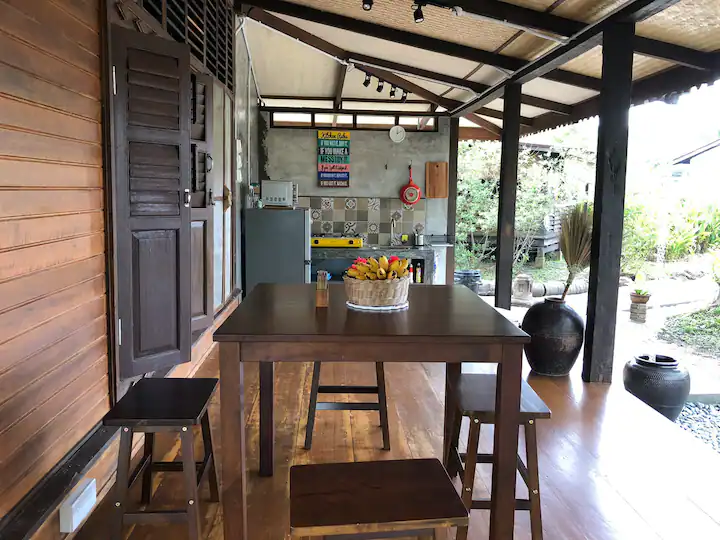 Photo by Teratak Damai Langkawi
Photo by Teratak Damai Langkawi
Travellers get to live and breathe Malay vernacular architecture at Teratak Damai Langkawi in refurbished traditional Malay houses that range from 100-150 years old.
The flexibility of the house’s design allows it to accommodate an owner’s need for change in location and family size, prolonging its usage. In fact, Marina bought half a house from someone in the village, relocated it into her compound, and then built extra rooms to fit her family’s needs.
In keeping with vernacular architecture, the traditional Malay house is made of locally available, replenishable wood and is raised on stilts, creating minimal impact on the land it is built on. It also responds to the warm and humid weather with its pitched roof and shuttered windows, encouraging air flow and reducing the need for air-conditioning.
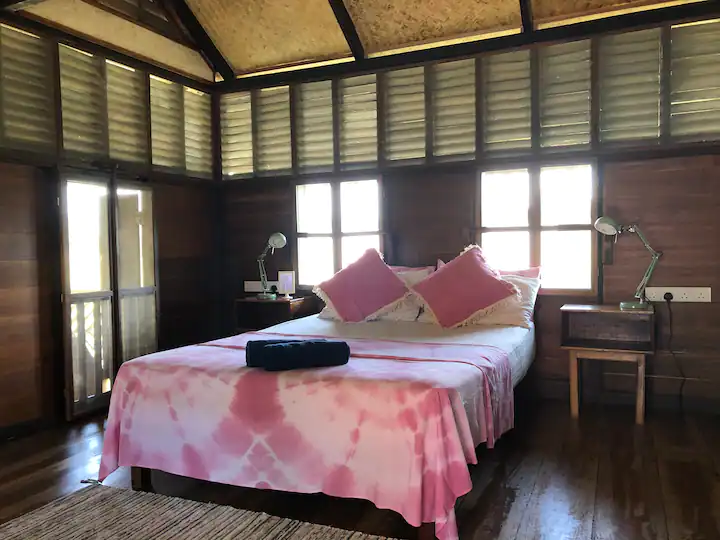 Photo by Teratak Damai Langkawi
Photo by Teratak Damai Langkawi
Using what you have
“95% of our materials are sourced from Langkawi, with 100% sourced from Malaysia,” declares Marina with pride. When they bought the piece of land, it was an old coconut grove. All 27 trees that they cleared off the compound were used for roof construction on the new brick houses.
Maintaining the traditional buildings however, did come with its own set of challenges. Being made almost entirely out of wood meant that the threat of termites was a major concern for Marina. Modern pest management proved too costly and that got her curious about what the villagers were doing to prevent infestations.
It turns out, it was applying oil runoff from cars onto the wood!
Although not the ‘perfect’ answer to a problem, it was nonetheless a very practical one.
“This is how island life works: we use the resources that we have,” Marina reveals.
Having dealt with the termite problem on their property, the couple were left with huge harvested termite mounds on their hands. Instead of getting rid of them, they chose to repurpose it. With the guidance of her teacher, local master ceramist Mohammed Radzi Ismail of Ilham Ceramic Studio, they began to process the mounds into clay fit for pottery-making. So if you pick up a soap tray, mosquito coil plate, or decorative item in one of the rooms, know that it had a truly remarkable sustainable origin story!
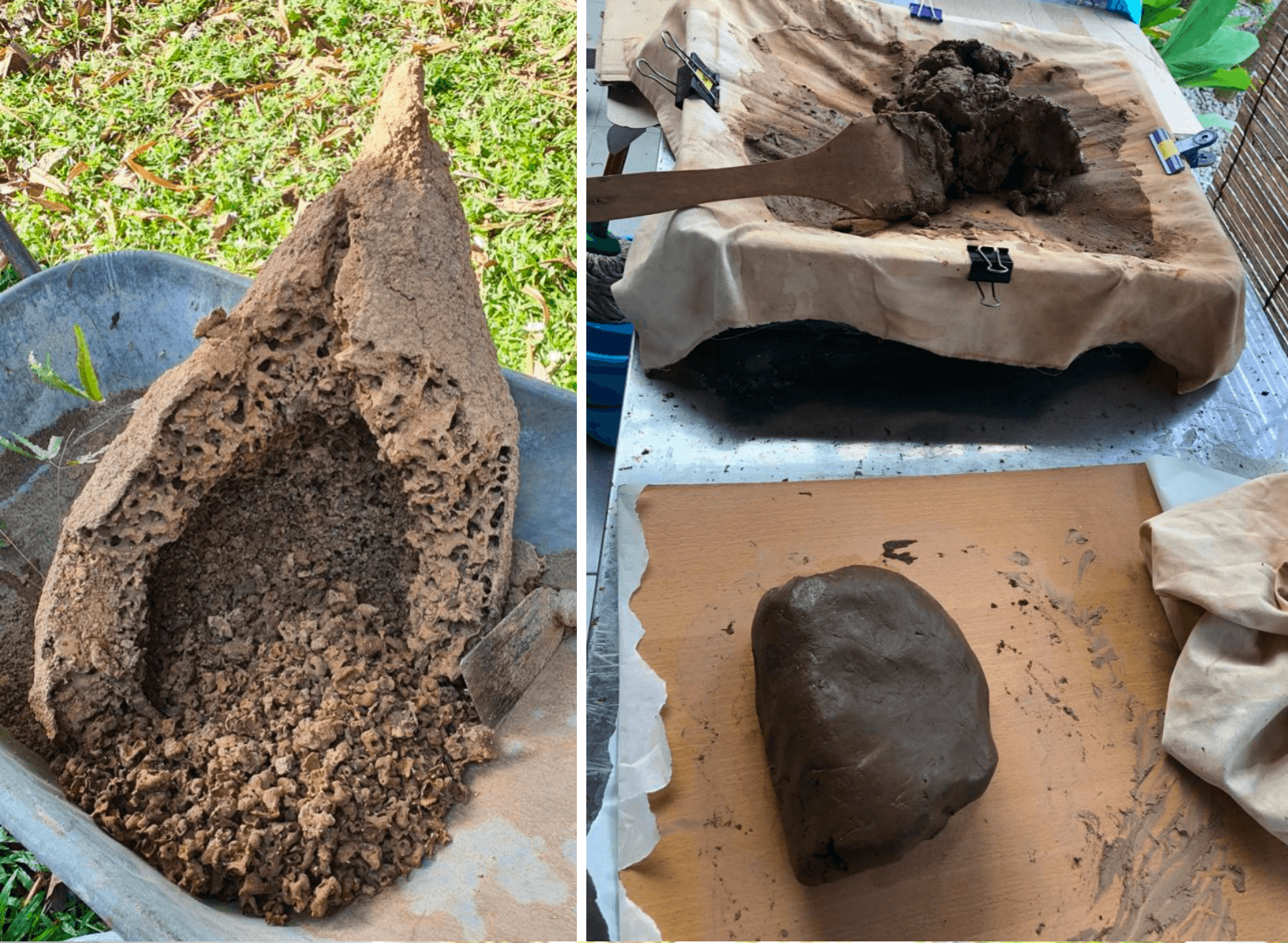
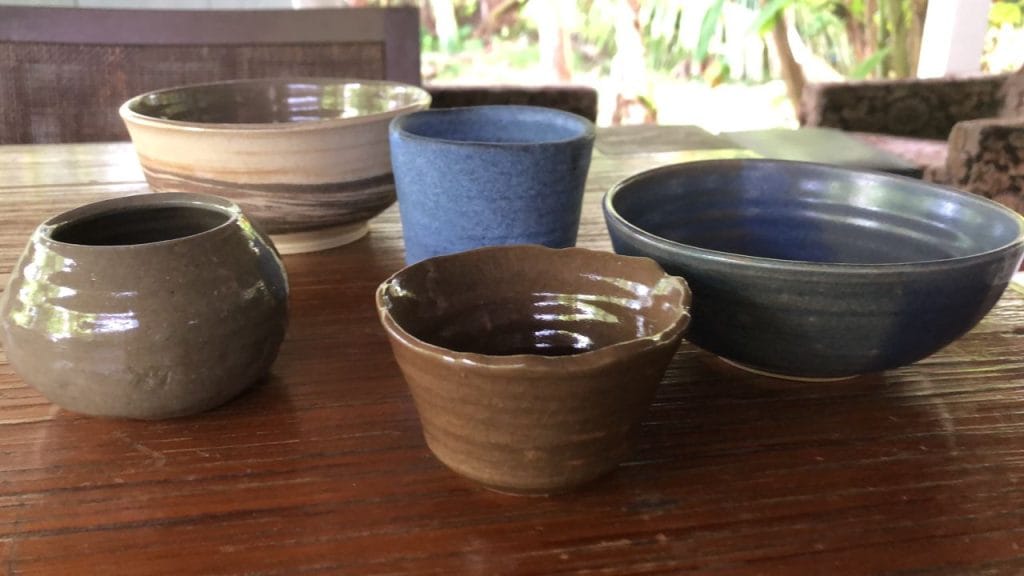 Photos by Teratak Damai Langkawi
Photos by Teratak Damai Langkawi
Keeping it natural
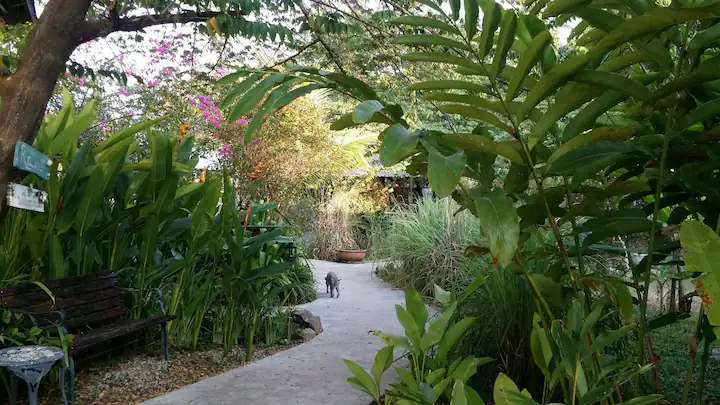 Photo by Teratak Damai Langkawi
Photo by Teratak Damai Langkawi
A traditional Malay home would not be complete without a garden.
“I have over the years planted most of the traditional scented flowers which used to be available in Malay traditional homes in our garden,” Marina shares.
With the help of locals whom she hires, Marina has grown a collection of native and naturalised ornamentals, fruit, herbs, and ulam (plants that are traditionally eaten raw or lightly blanched), all without the use of pesticides.
The beauty of her garden has not gone unnoticed. Local event planner Gadis Events buys cut flowers and foliage from Marina to use in their table decorations. Aside from adding tropical flair to conventional floral arrangements, picking these over imported plants keeps costs and carbon emissions low for the small business.
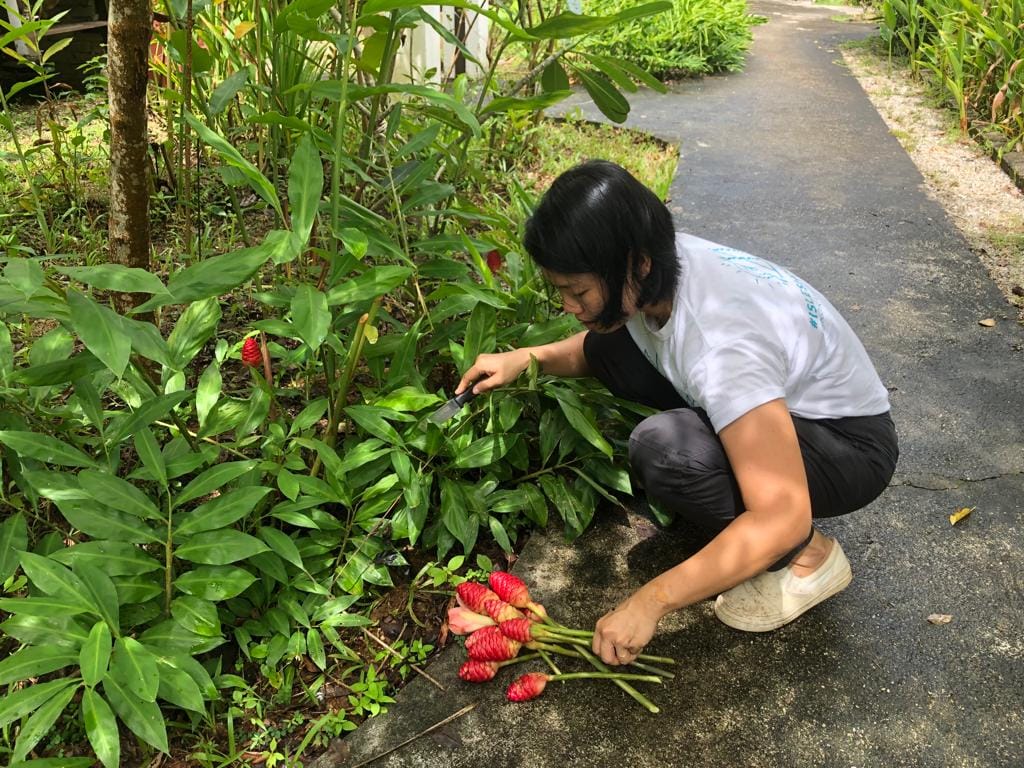 Event planner handpicking shampoo ginger (Zingiber zerumbet)
Event planner handpicking shampoo ginger (Zingiber zerumbet)
flowers from Marina’s garden. Photo by Teratak Damai Langkawi.
Marina’s love for local plants was further nurtured by her experience with the late Dr Abdul Ghani Hussain, who helped her treat her gallstones with herbal remedies. A medical doctor with a strong passion and practice in traditional Malay medicine, Dr Ghani had tirelessly put his efforts into documenting, preserving, and sharing the wonders of medicinal flora in Langkawi.
Marina laments on the loss of a knowledgeable practitioner like Dr Ghani. She has plans to start a dedicated vegetable area in the compound, so that her guests can harvest fresh edibles and incorporate them into their cooking; a perfect accompaniment to the fish she recommends them to buy from local fisherfolk.
Authentic local experiences
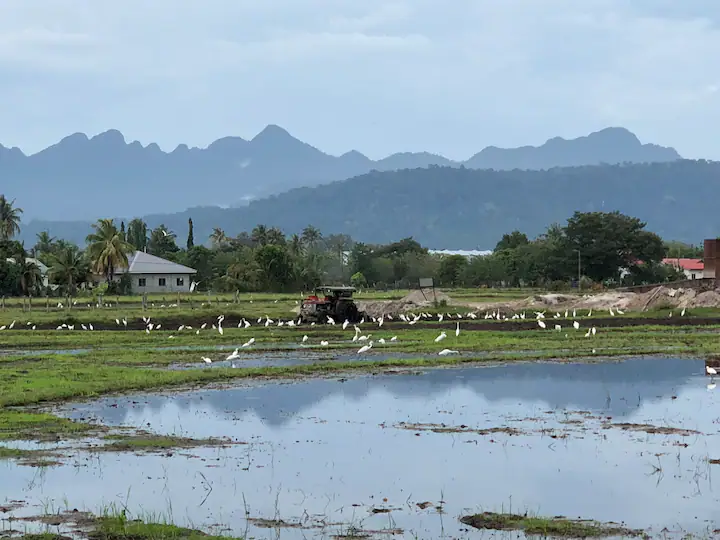 Photo by Teratak Damai Langkawi
Photo by Teratak Damai Langkawi
“People don’t travel thousands of miles to see something that they can see in their own country,” Marina states matter-of-factly.
When guests arrive, she greets them with a brief overview of the island and an introductory tour of the area. As they chat, she learns about their interests and their level of exposure to Malaysian culture. Based on that, she gives further recommendations on what to do and see and how to be culturally sensitive while exploring the island, its people, and (if it is the season) its festivities.
“90% of our guests are international travellers. We tell them that we have a predominantly Muslim community here. We share with them how to dress within the kampung, what are the Malay greetings,” Marina says.
To further aid their exploration, Marina has prepared a collection of pamphlets from local businesses: nature walk offerings, places to visit, a list of local birds to spot. This circulates traveller spending within the community, meaning the ringgit you spend here is truly boosting a more sustainable local economy.
There is even a hand-drawn map Marina made herself that she lovingly calls The Magic Scooter Ride – detailing the tiny roads in the village, spots to watch water buffaloes, the best warung’s (food stalls) around, and where to find local produce and services.
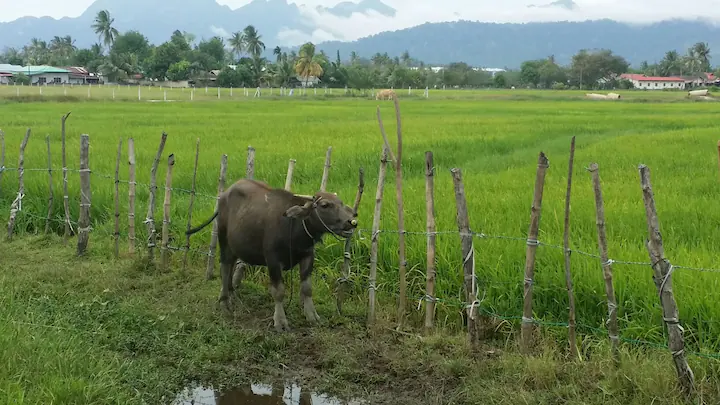 Photo by Teratak Damai Langkawi
Photo by Teratak Damai Langkawi
Being travellers themselves, Marina and Ruben enjoy getting a true idea of what living in a local home actually feels like.
“It gives us a small insight into their [the locals] struggles, challenges, and benefits of their lifestyle. For us, that is learning. We come away enriched and sometimes brimming with new ideas,” she says.
At Teratak Damai Langkawi, the couple want to share the experience of village life, taking only what is needed so as not to deplete natural resources for future generations. That, Marina believes, is the core of sustainable living and something that responsible travellers and travel operators need to be mindful of.
“If we can learn again how to live with the natural rhythms of seasons and forces of nature, perhaps there is hope that there will still be natural resources to enjoy for many future generations to come.”
Find Teratak Damai Langkawi on Airbnb
Learn more about Malaysian vernacular architecture
Buy Dr Ghani’s e-book Nature’s Medicine
Writer: Adeline Chua (ANTARA Lab)
Contributor: Marina Mazlan (Teratak Damai Langkawi)
Location: Kedah Type: Guesthouse GSTC Type: Hotels & Accommodation Sustainable Tourism Malaysia Commitments Focus:
Global Sustainable Tourism Council Performance Indicators for Hotels & Accommodation: A7.3 Sustainable practices and materials …use locally appropriate and sustainable practices and materials. A7.3.1 Local materials, practices and crafts have been used in buildings and design where practicable and appropriate. A7.3.2 Native and endemic plants obtained from sustainable sources have been used in landscaping and decoration, avoiding exotic and invasive species. A9 Information and interpretation The organisation provides information about and interpretation of the natural surroundings, local culture, and cultural heritage, as well as an explanation of appropriate behaviour while visiting natural areas, living cultures, and cultural heritage sites. A9.1 Information/interpretation material about the natural and cultural heritage of areas visited is available and provided to customers. A9.3 Information is provided to customers about appropriate behaviour in the areas visited |

